While Portugal was a worthwhile interruption, Andrew and I had a few stops left on our Grand Spanish Tour. After packing up our bags in Porto and dragging our bleary-eyed selves to the airport at the crack of dawn, we crossed the border once again and touched down in Bilbao, the largest city and de facto capital of Euskadi. For those of you not fluent in Euskera, a language isolate with no known origin or linguistic relations and the oldest living language in Europe, Euskadi means Basque Country (and Euskera is, well, Basque).
Bilbao
Although we were tired and ready for a nap, Andrew and I knew we had only two and a half days in the city so we made it a point to hit some of the highlights before we crashed. First up, the most famous landmark in the whole city (and perhaps the entire north of Spain): the Guggenheim. Designed by architect Frank Gehry and inaugurated in 1997 by King Juan Carlos I, the striking museum stands on the banks of the Estuary of Bilbao and is an arresting sight for anyone entering from the north. We caught it just as the sun was going down.
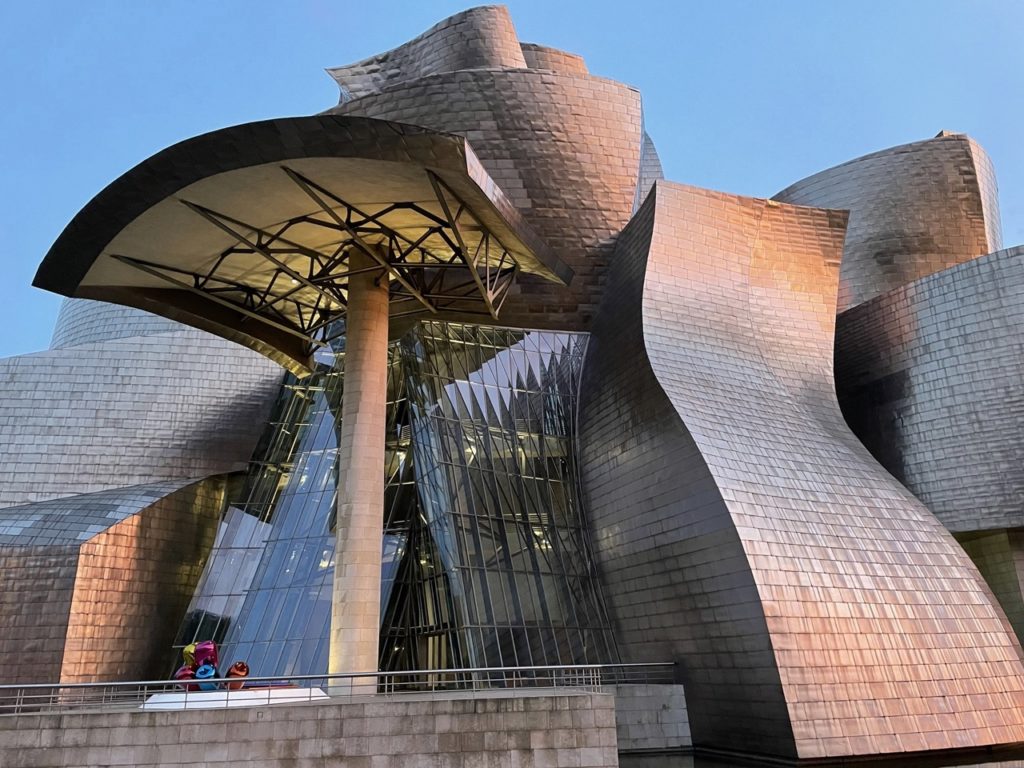
We didn’t manage to go inside the museum as it was too late when we arrived and closed the next day, but I’m glad we made the stop before heading to our hotel.
Speaking of which, what a hotel indeed. Throughout this trip, Andrew and I have mostly stayed in a combination of Airbnbs and budget hotels, varying in quality from perfectly serviceable to surprisingly nice. However, we struggled a bit to find accommodation in Bilbao as it’s one of the more expensive destinations in Spain, and so when I found this place—despite it being a bit unusual—we booked it, encouraged by the low prices and dim recollections about similar hotels in Japan.
What we’d chosen was a capsule hotel, something first constructed in Osaka in 1979 as a way for travelers or workers to get a quick night’s sleep on the go. Cheap, efficient, and minimal, these lodgings consist of a hallway with bunkbed-like pods just big enough to fit either a single or double bed. Your belongings are stored in lockers and there are shared bathrooms with toilet and shower stalls in other sections of the hotel. I’d read about capsule hotels before and initially, I was excited to try this one out. I was under no impression that it would be a luxurious stay, but I thought it was a fascinating concept and might prove to be an interesting place to sleep for a few nights.
Unfortunately, “concept” seems to be about where the thinking stopped for our particular hotel in Bilbao, Optimi Rooms. Although the big picture pieces worked well and the facilities were extremely clean, I couldn’t shake the feeling that no one involved in its design had actually spent the night as there were several smaller problems that made the experience more of a nuisance than anything else. For example, at check-in, we received a keycard that functioned both as a key to the lockers and a trigger for the electricity in the pod. However, since we only had one card, it meant that if Andrew got up to brush his teeth or change clothes and I stayed in the pod, I would have to sit in complete darkness. On the other hand, if we were both getting ready for the day and I forgot something in the locker, but Andrew had the keycard and was showering in the men’s bathroom, I just had to sit and wait for him to finish.
There were other issues, as well. Although the hallway containing the pods was well air-conditioned, the fans inside the pods didn’t work and as soon as you shut the door for privacy, it jumped about ten degrees and became incredibly dry and stuffy. The mattress, too, was thin and flimsy, which meant it didn’t feel so far off from sleeping on the floor. The first two nights we were there, Andrew and I slept maybe a combined total of ten hours because the room was so uncomfortable.
That being said, it wasn’t all bad. The room did look incredibly cool and futuristic, and I got to show Andrew one of my favorite TV shows, Fleabag (we watched the whole thing since we couldn’t sleep). So, you know, you win some you lose some.
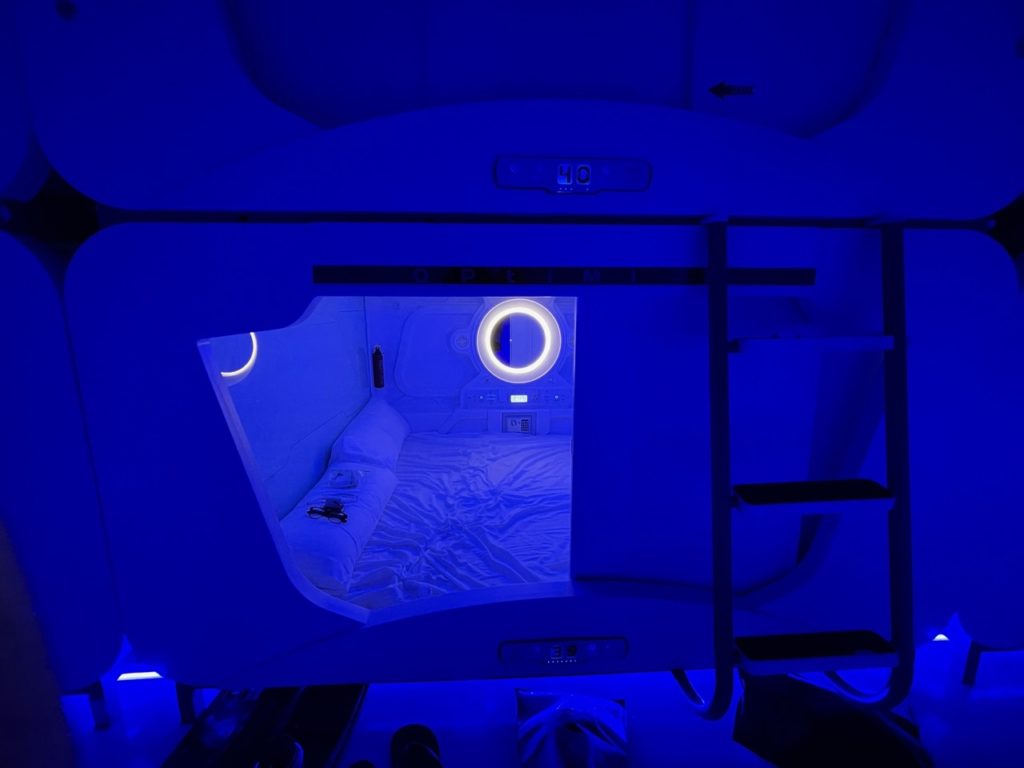
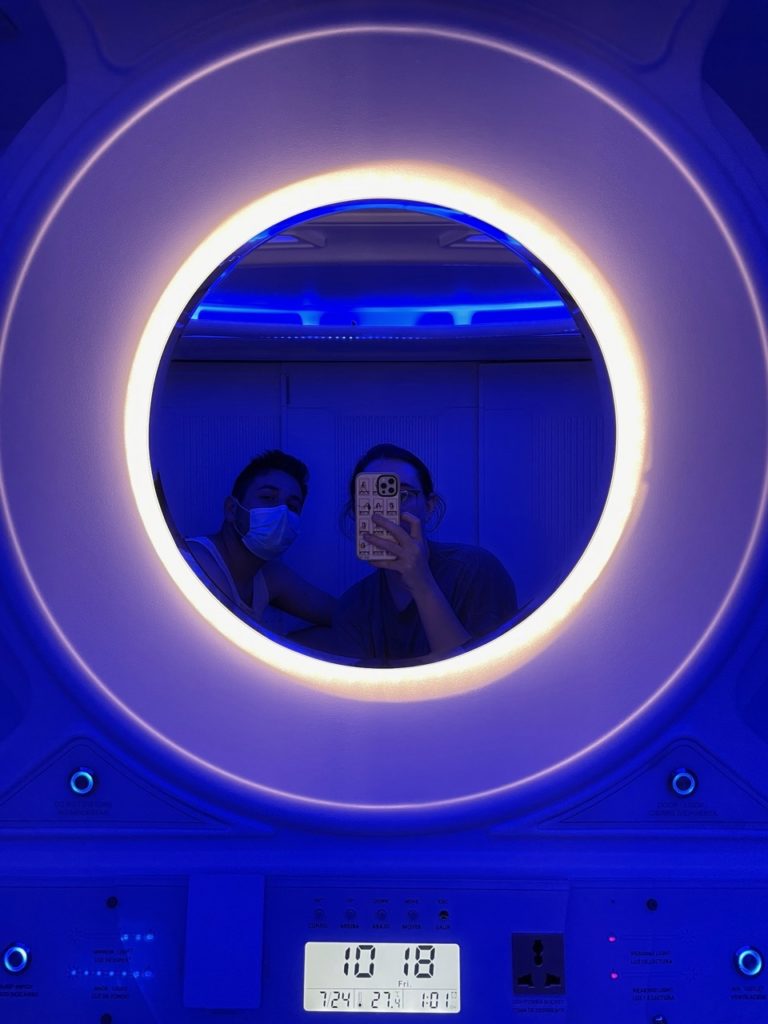

When we weren’t hanging out in our pod, we were making the most of our time in Bilbao. We took a walking tour during our first full afternoon there, which helped us get a better grasp of the city’s history and cultural position as part of Spain. While only a fraction of its citizens speak Basque fluently and there isn’t a strong separatist movement like in Catalonia, the Basque Country is a distinct region with its own autonomous government, traditions, and identity.
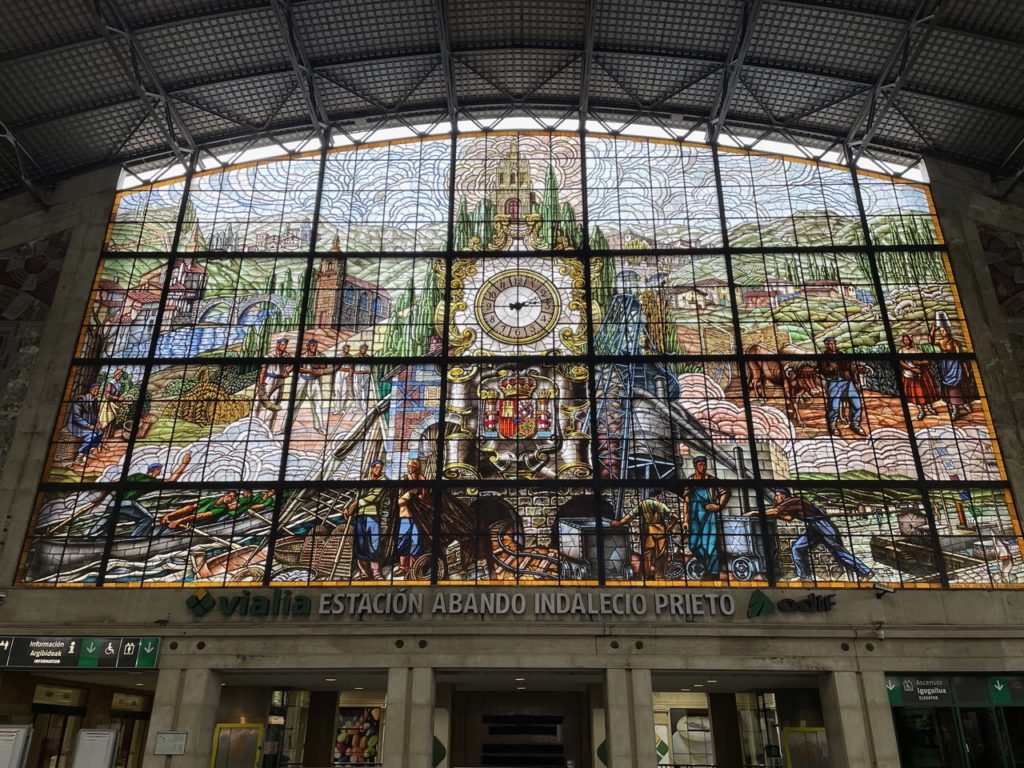
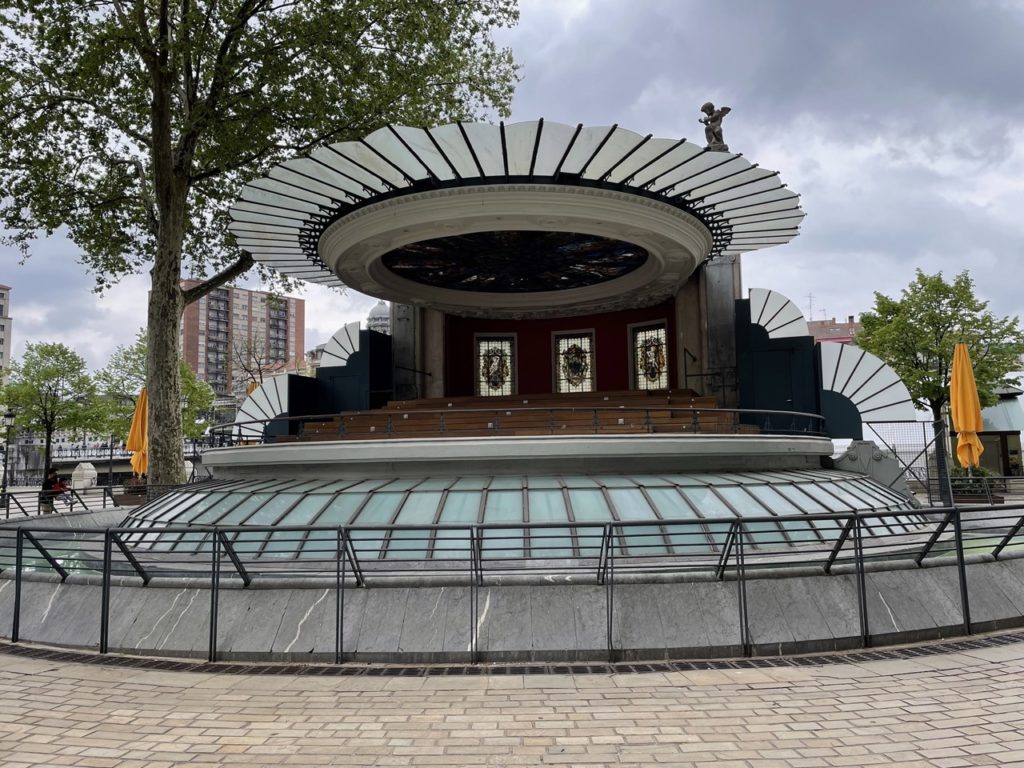

Three days weren’t necessarily enough to fully understand all the nuances of those differences, but we certainly had plenty of time to taste them! Unlike the rest of Spain, where the tapa reigns supreme, the Basque Country is known for the pintxo. Smaller than your average tapa and usually served on a slice of baguette (Bilbao is, after all, not so far from France), pintxos come in many different flavors and arrangements. Instead of ordering a whole spread, most natives will hop from bar to bar, ordering the specialties of the house and maybe a glass of Basque cider or the popular txakoli white wine. Our first few times out, we were too hungry to bother going to five or six different places to get our fill, but by San Sebastián, we got the hang of it (don’t worry, I’ll get to that soon). Our favorite place we tried in Bilbao was Bar SantaMaría, a bustling neighborhood stop in the city’s Casco Viejo, or old town.


Full and ready to keep exploring, Andrew and I wandered the streets of the ancient quarter until we reached the Plaza Unamuno, named for the famed writer, philosopher, and professor Miguel de Unamuno y Jugo. Although celebrated throughout Spain and despite being born and spending most of his life in Bilbao, Unamuno is more than a little controversial in Euskadi—in 1901, he proclaimed that the Basque language should be abandoned and more than a century later, the Basques have still not forgiven him.
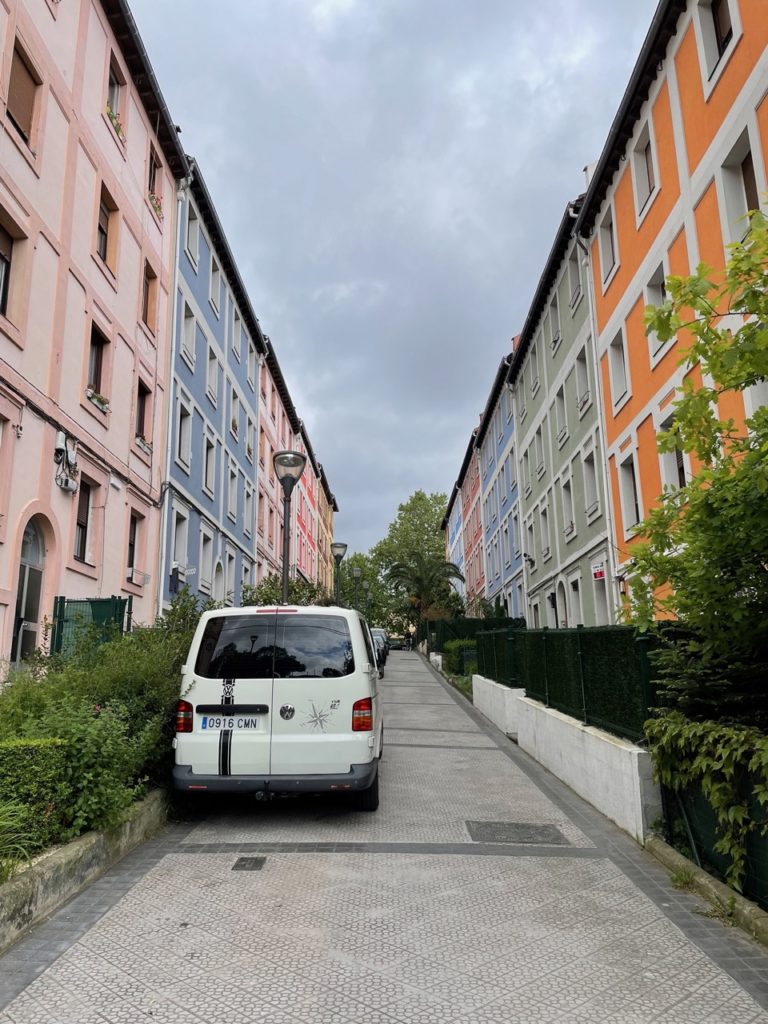
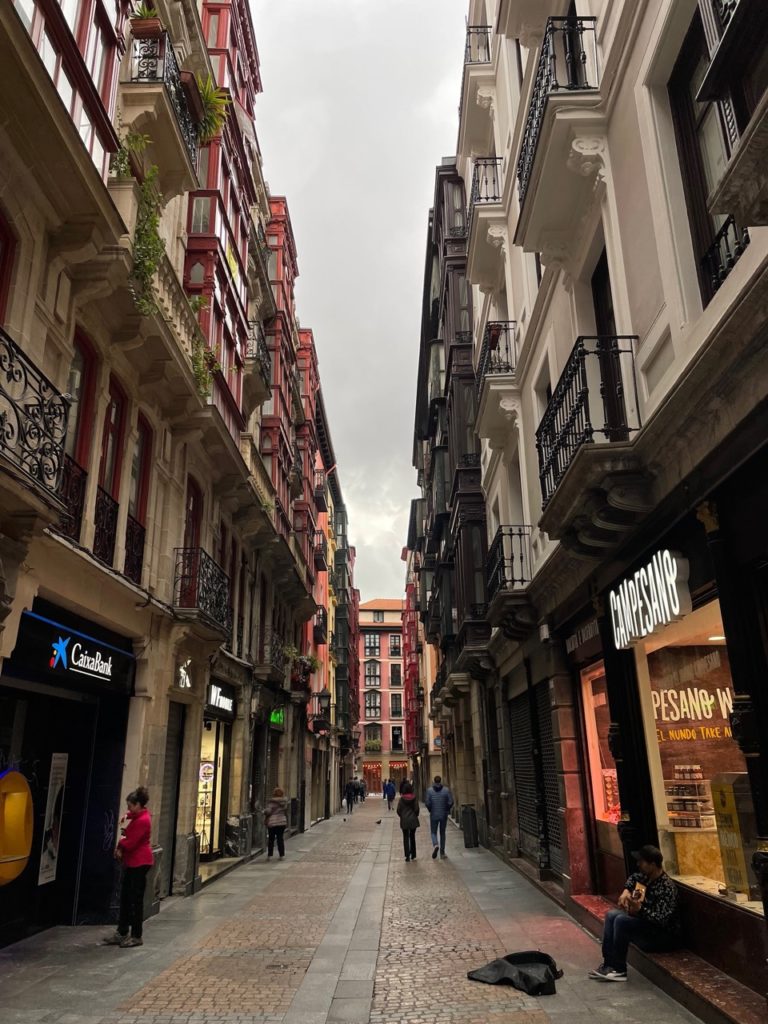
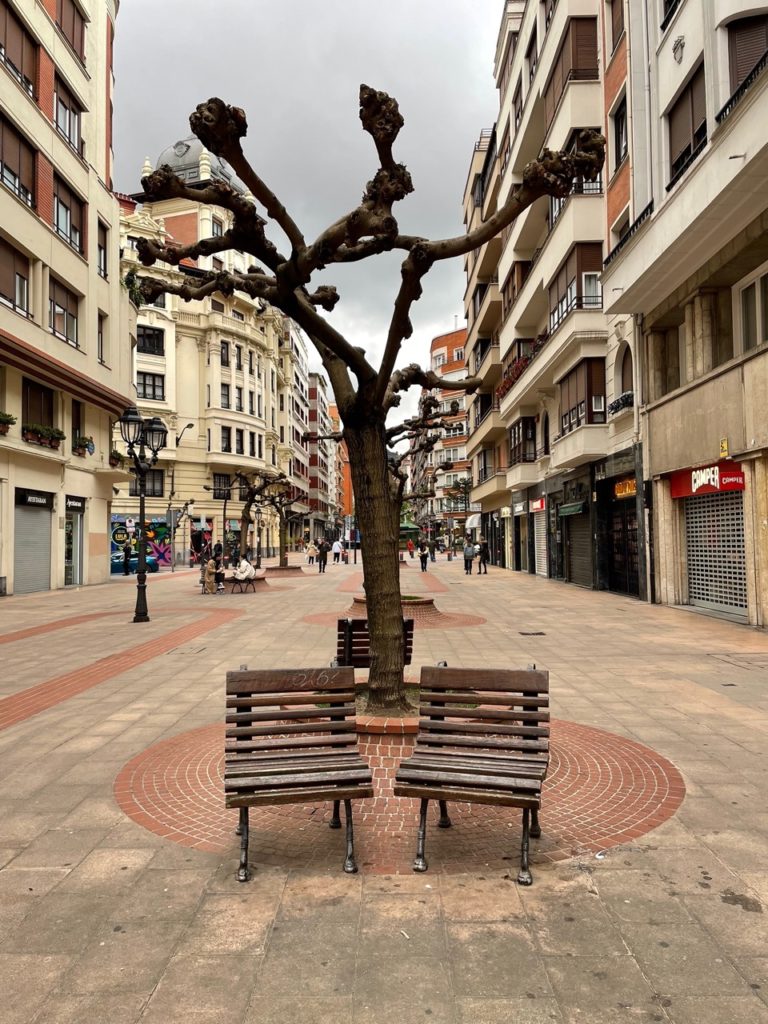
From there, we climbed more than three hundred stairs to the beautiful Etxebarria Park, a massive green space that contains a soccer pitch, walking trails, and sweeping views of the city. The first part of the park is known as the Cementerio de Mallona and was once a (you guessed it!) cemetery, though all that remains is the columned arch entrance. The rest of the land was a steel company, but it closed sometime before the park was built in the 80s. I’m not exactly sure when the bodies were moved.
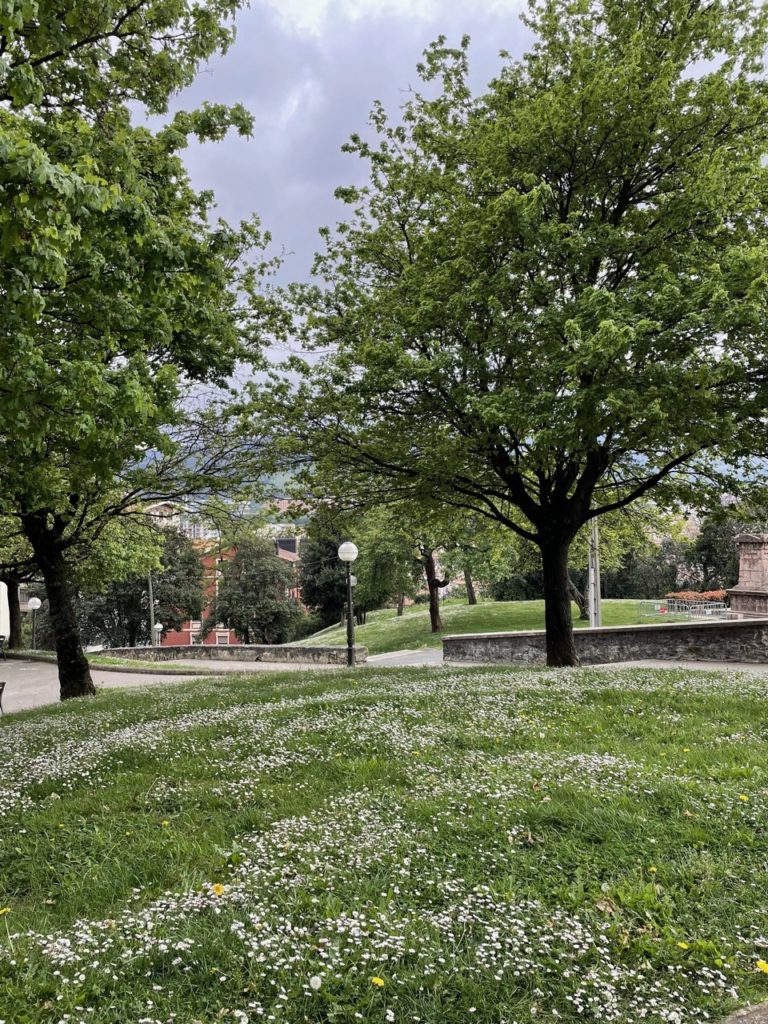
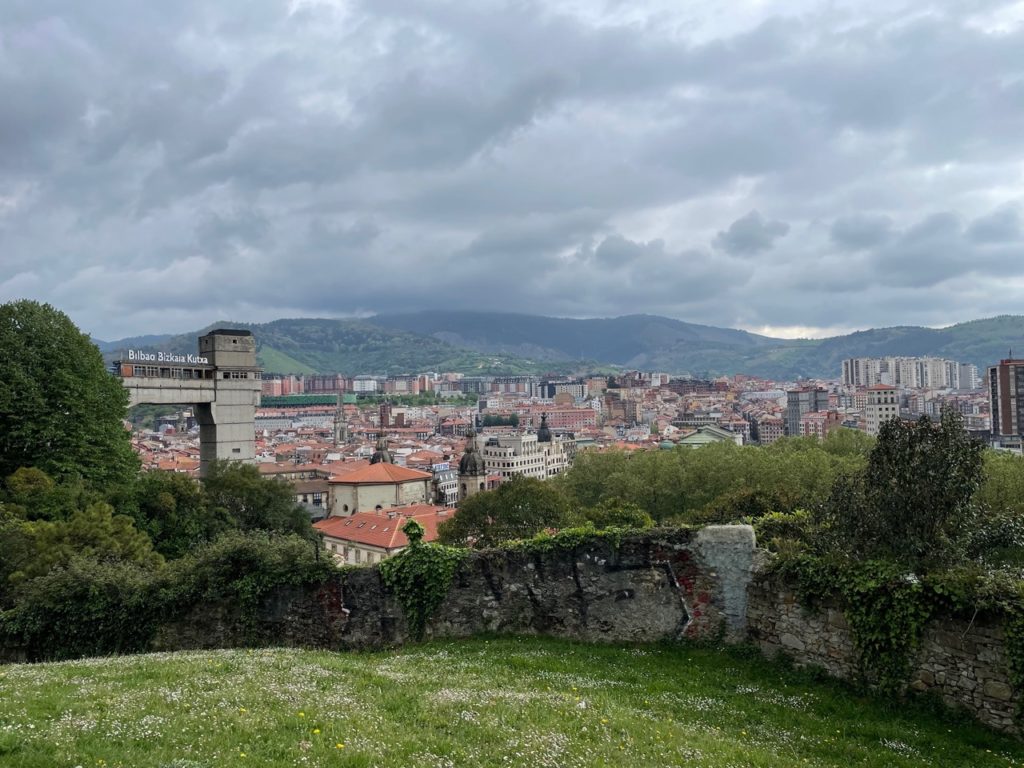
Before we left Bilbao, we got a delicious, hearty lunch at Bikandi Etxea. This traditional Basque restaurant has limited hours and only three tables, so call ahead and get there early, but it’s worth the effort. The simple but well-seasoned, ample portions were just what we needed during our final, rainy day in the city. Then we hopped a bus and headed onward!
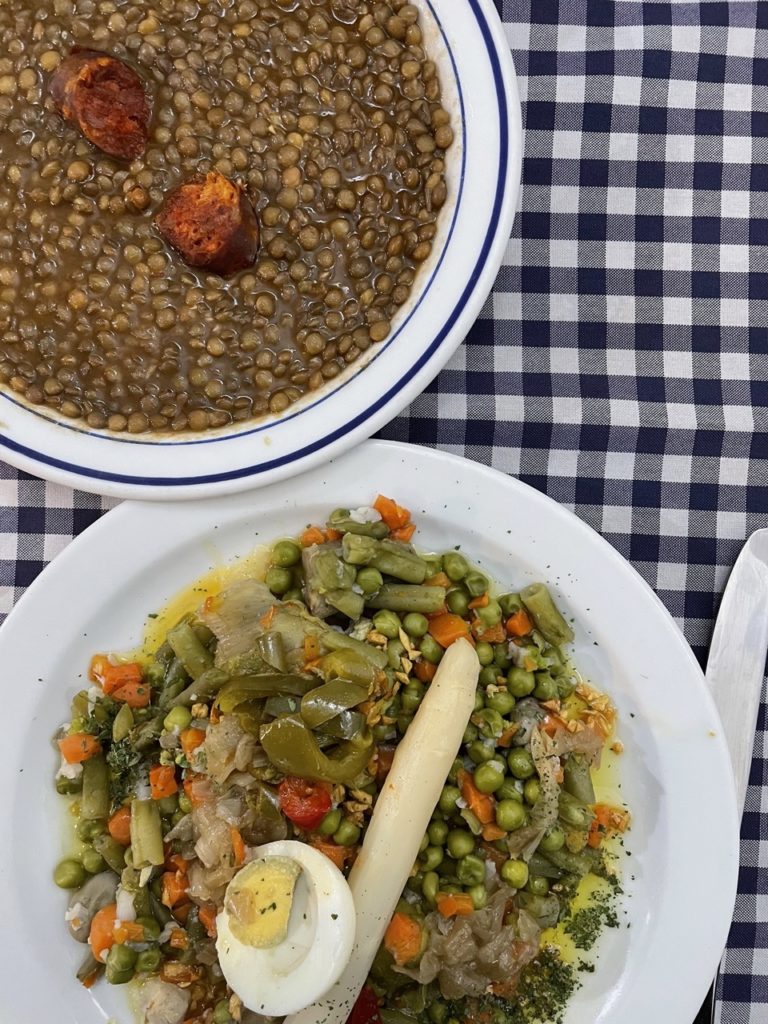
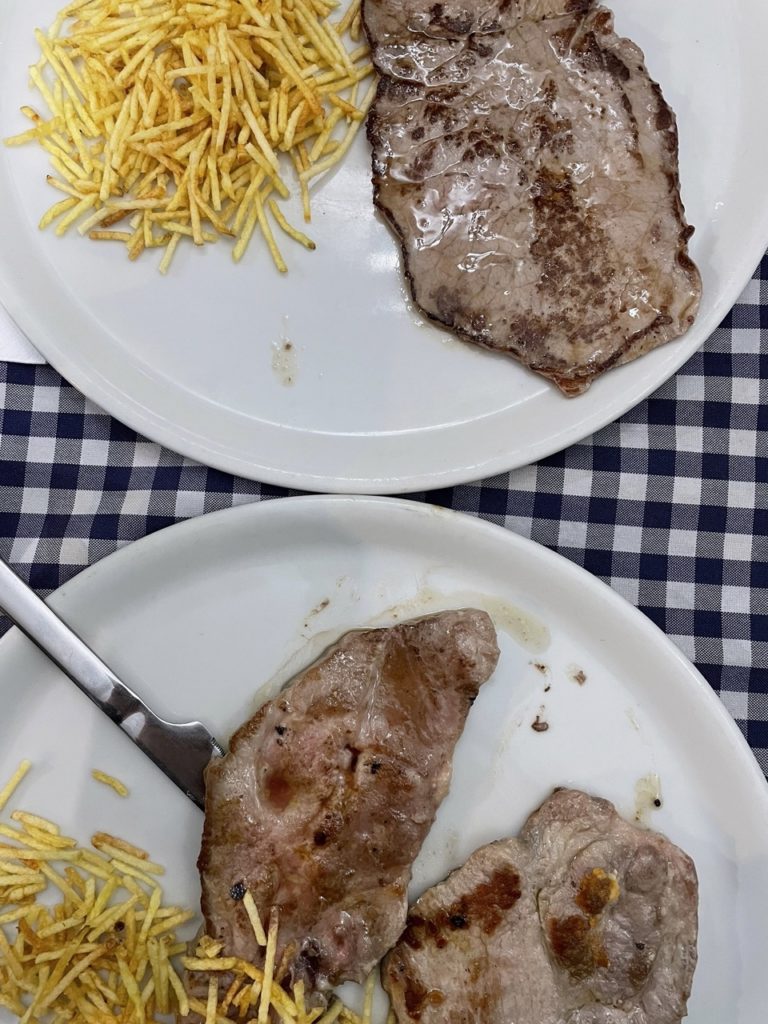
San Sebastián-Donostia
Our next stop, and second-to-last in Spain, was in the beautiful coastal city of San Sebastián-Donostia. Don’t be fooled by the name, it’s only one city, but it’s written as such to include both its Spanish and Basque titles. I’ll be referring to it as San Sebastián for the sake of convenience, but don’t mistake that as a political declaration of anti-Basque sentiment on my part! I’m no Unamuno.

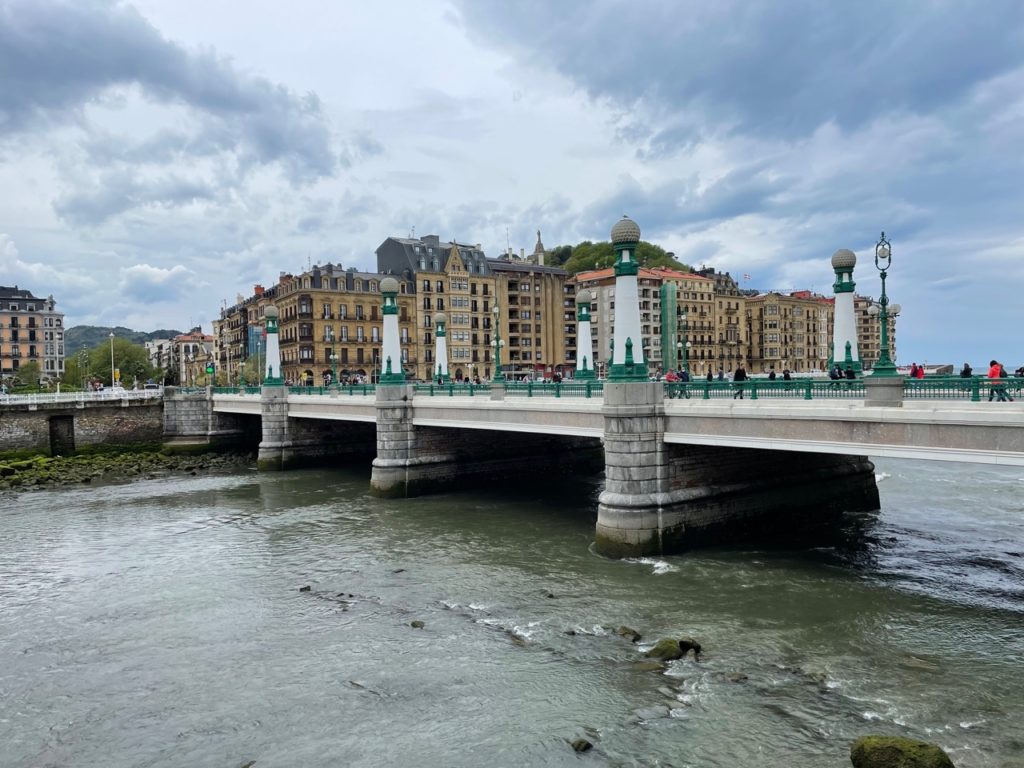
San Sebastián may be smaller than Bilbao, but it’s just as rich in culture. In fact, it’s known as the food capital of Spain due to its incredibly high density of acclaimed restaurants—it has the second-highest number of Michelin stars per square meter in the world! (After Tokyo.) While we didn’t swap out our well-worn jeans for something nicer and splurge on a Michelin star meal, we did go on more than a couple of hunts for the best pintxos in town and I have to say, I think we found them.
Some of our favorite places were in the Gros neighborhood, a slightly less touristy area across the river from the old town. We ate tortillas at Zabaleta; the famous gilda pintxo of olives, anchovies, pickled guindilla peppers, and onions (my favorite pintxo!) at Bar Rikardo; and I even tried a “volcano” of morcilla (blood sausage) topped with a raw egg yolk at Hidalgo 56. Andrew abstained from that last one.
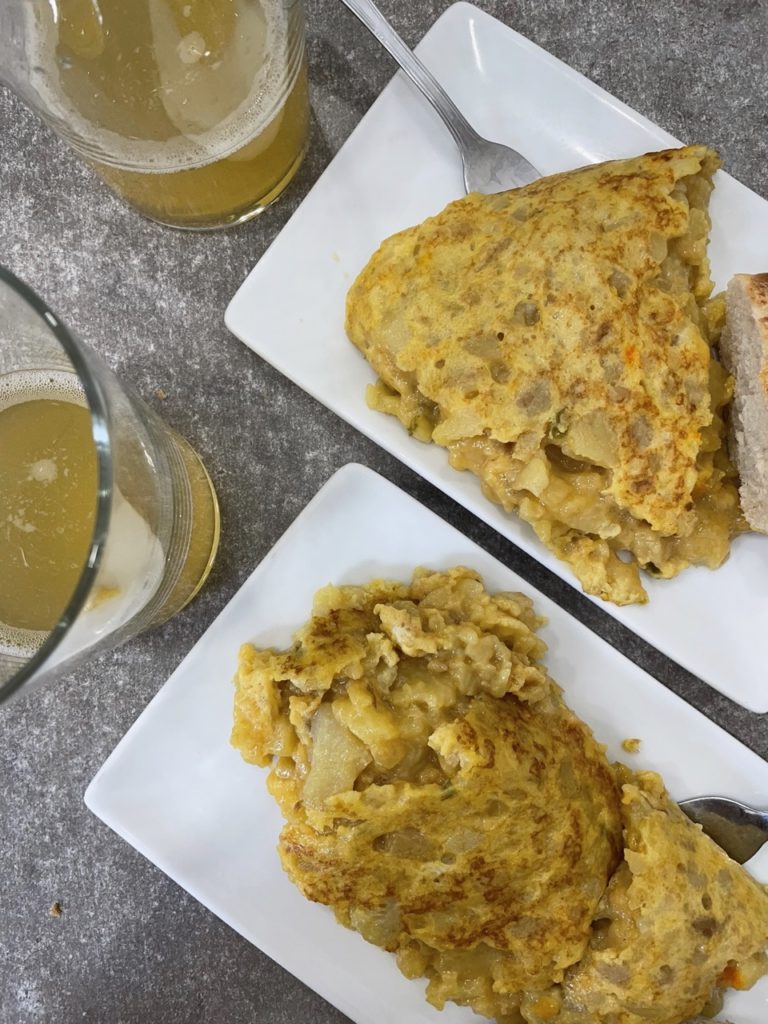
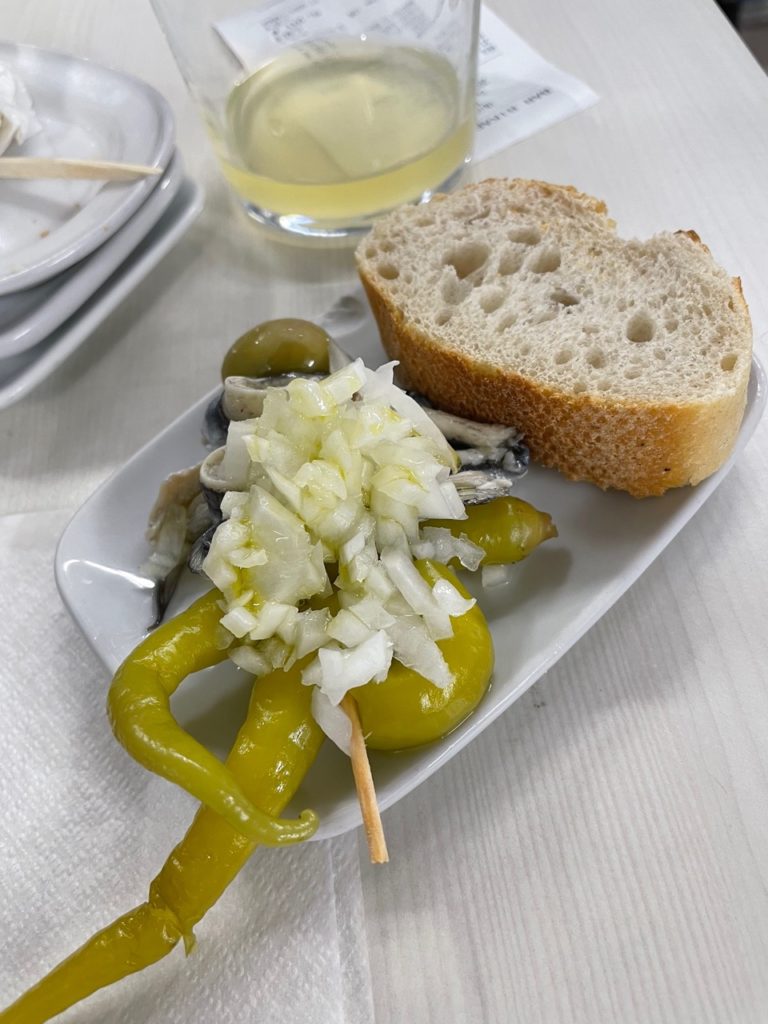
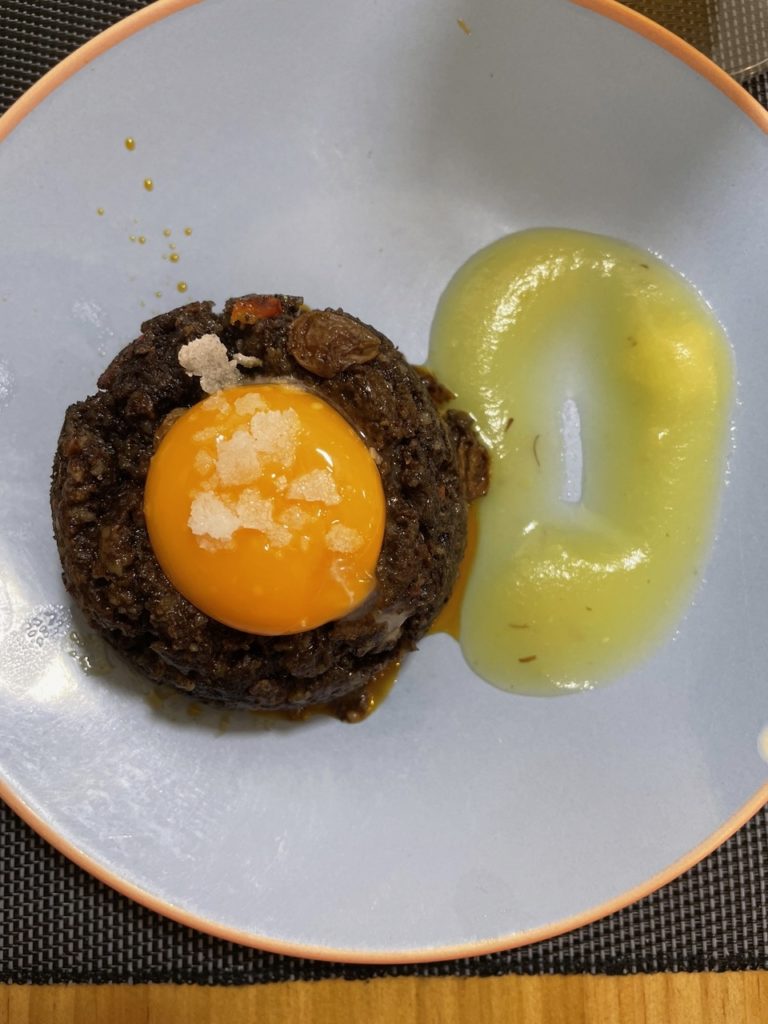
Back across the river, Andrew and I visited two more stops worthy of any visitor to San Sebastián’s time. The photo in the middle is from Bar Txepetxa, a restaurant lauded for its anchovies (and, apparently, a favorite of Joe’s from the Princess Diaries!). The photo on the right is from Bar Nestor. They only serve four or five dishes, but they do them exceptionally well. If you’re in town, you absolutely must order the peppers and the tomatoes. Trust me.
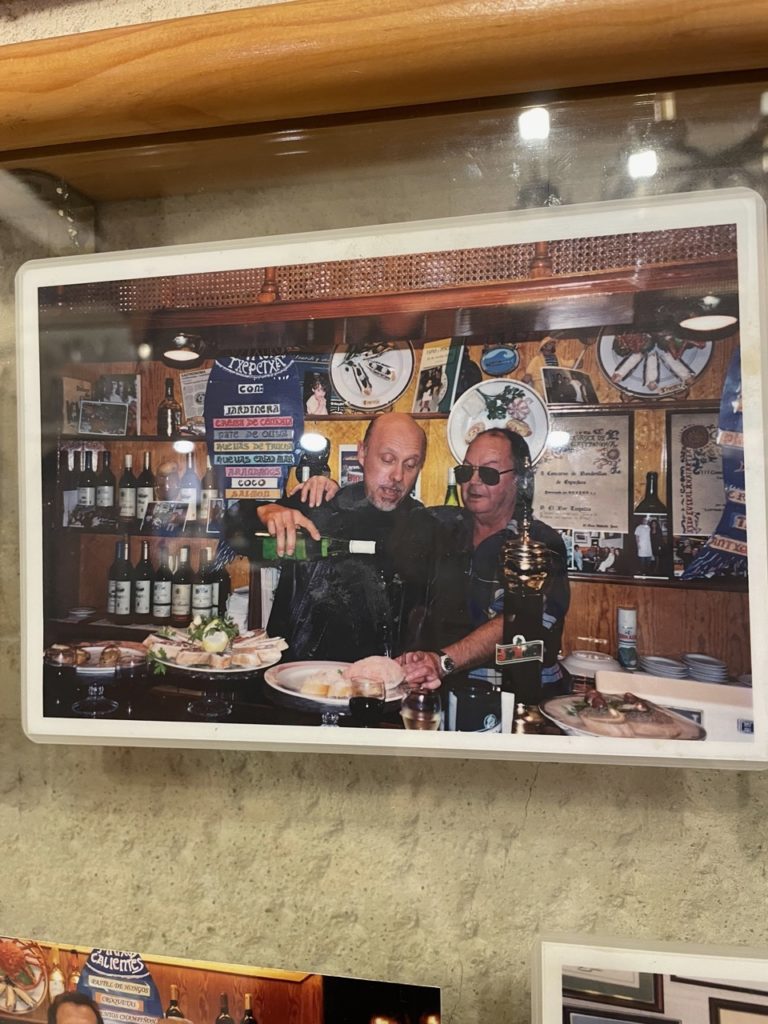
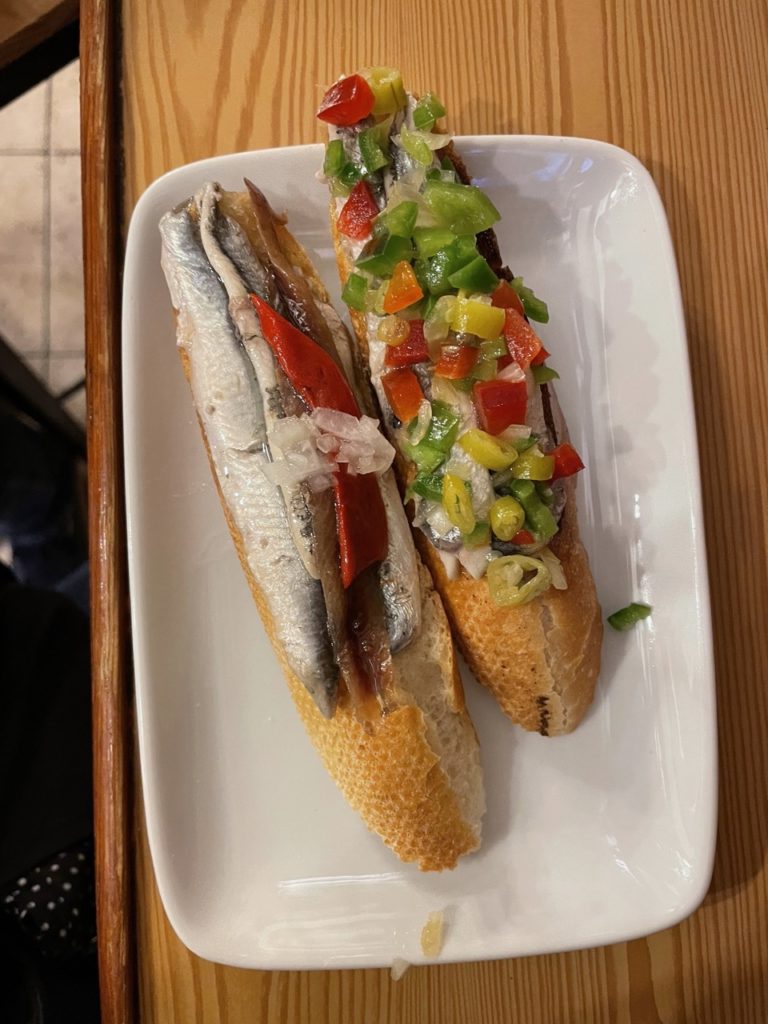
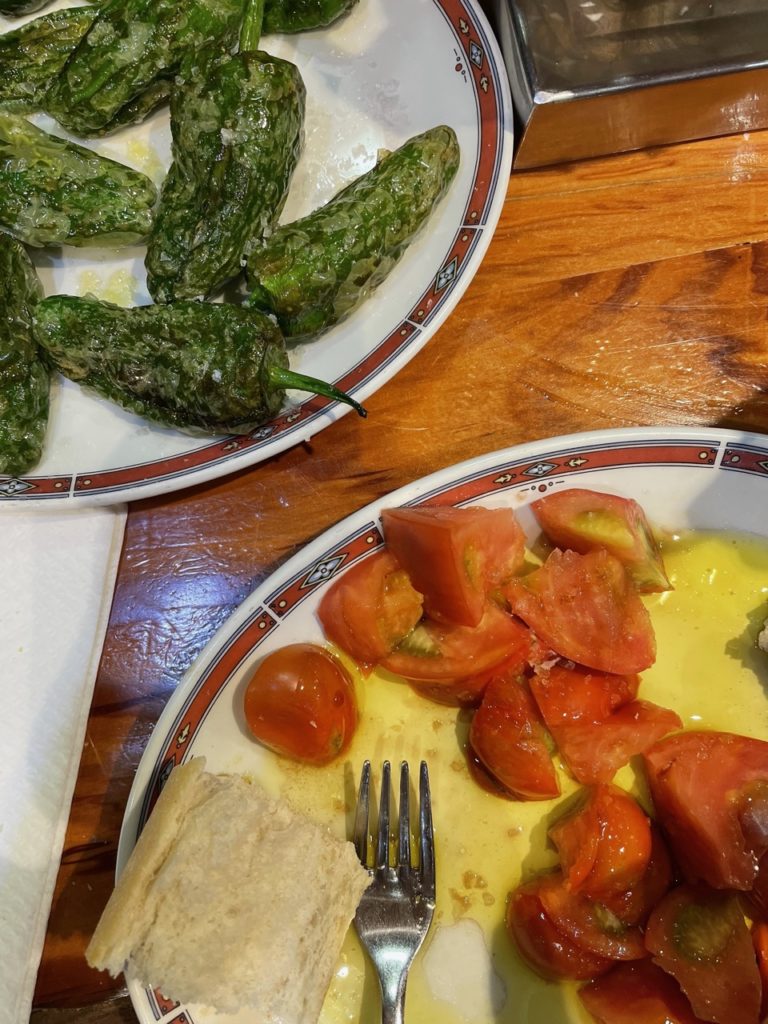
San Sebastián is also known for its natural beauty. Although it has since extended south along the river, the oldest parts of San Sebastián sit along two neighboring bays, which means much of the city’s northern edge is soft, golden sand and gorgeous views of the Atlantic. It could be worse!
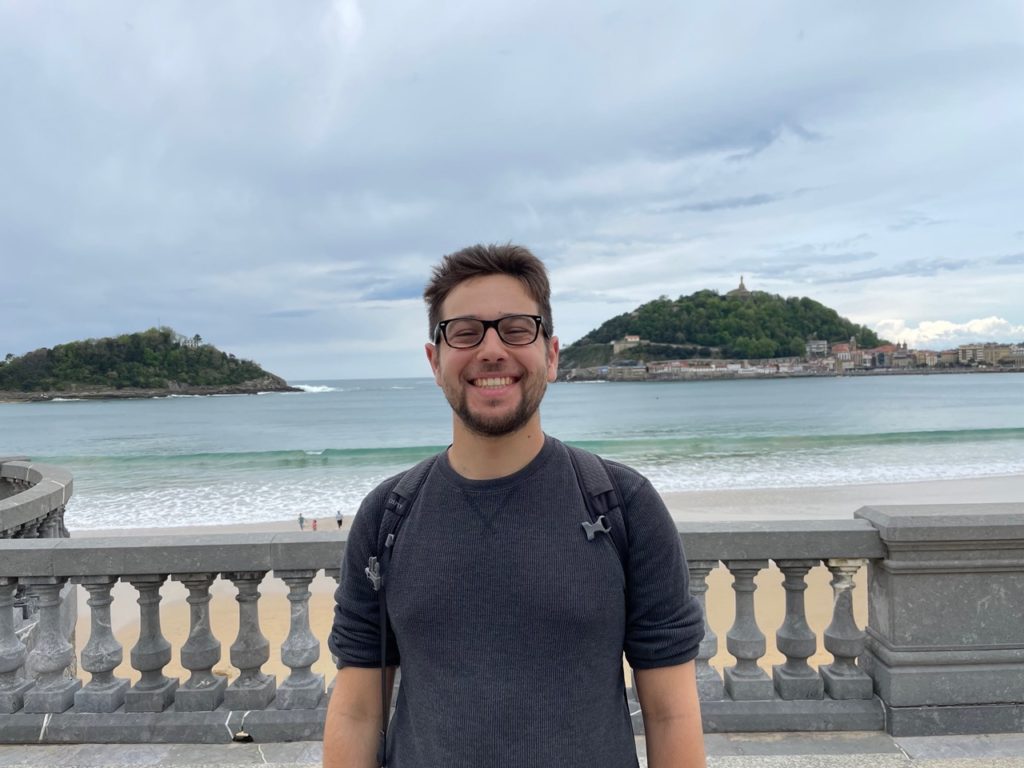
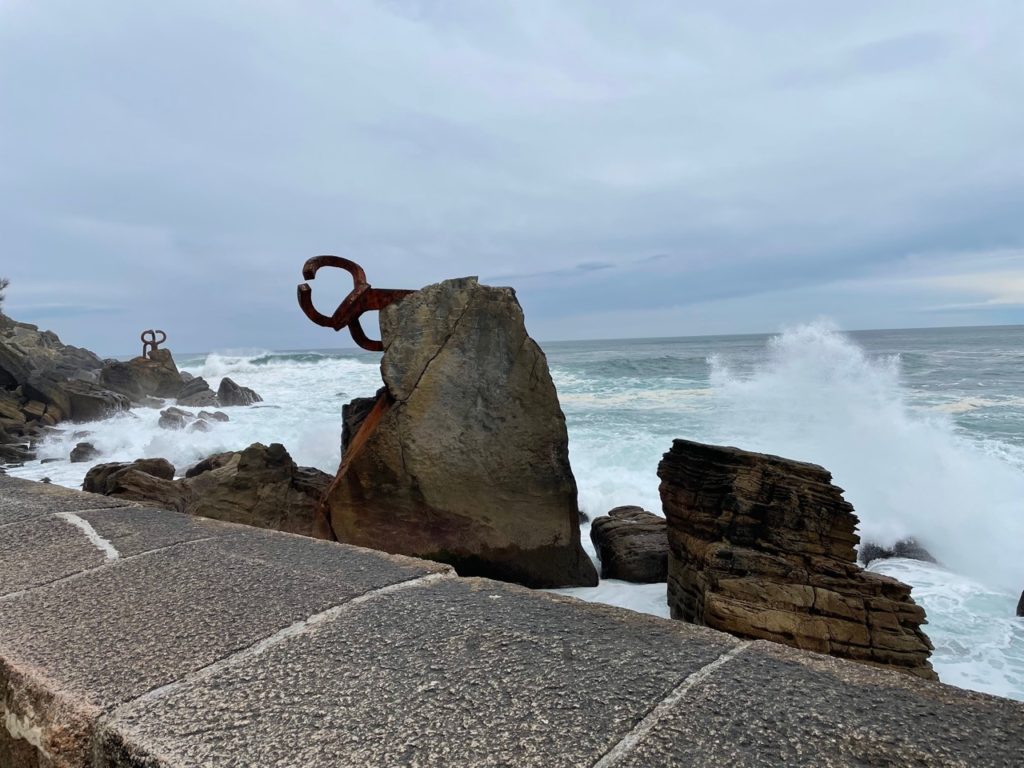
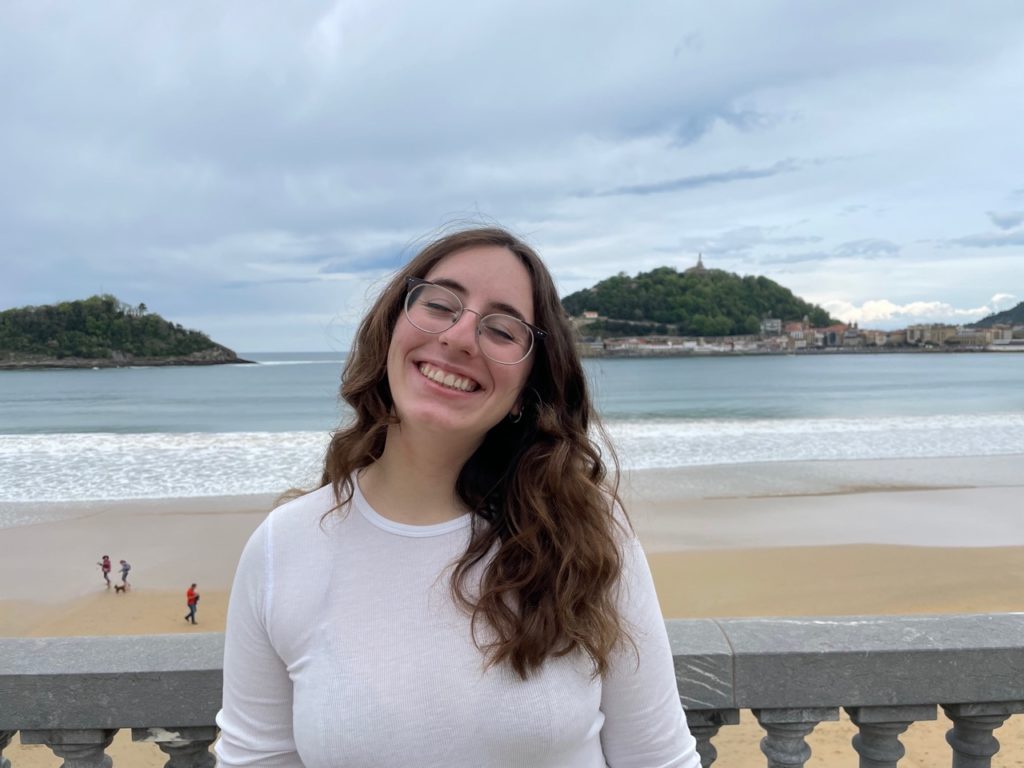
If you happen to have a few days in San Sebastián, it’s worth it to take a couple of hours to go up to Monte Igueldo via the funicular (or you can hike directly up the mountain, if you’d prefer!). This miniature amusement park first opened its doors in 1912 and while it’s not exactly Disneyland, the views it offers are well worth the small cost to reach it. And if you really want to test your tolerance for heights, you can pay a couple of euros to ride a hundred-year-old wooden roller coaster that takes you high over the cliff’s edge. It’s only two minutes long, but when else are you going to get to take a ride over the ocean like that?
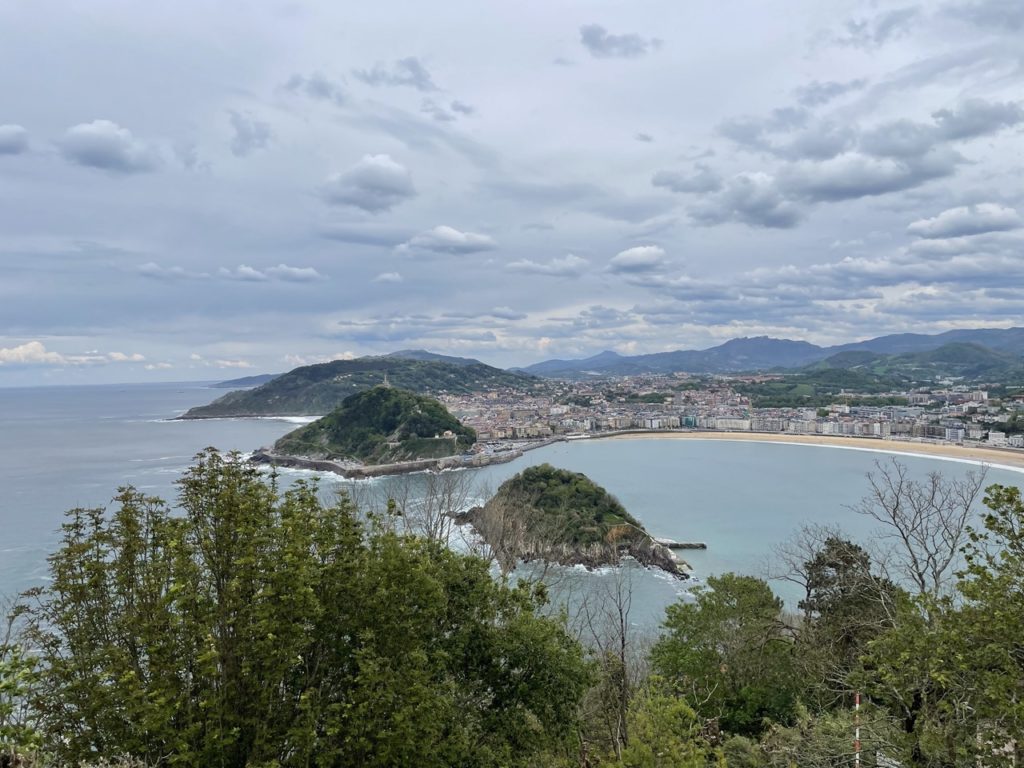

After far too few days, our time in San Sebastián-Donostia, and in the Basque Country as a whole, came to an end. Although I don’t think I could stand the rainy weather for an extended period of time, I’m glad we stopped in Bilbao and San Sebastián and if given the chance, I’d love to return. Maybe next time I can pack a nice dress and make a reservation at one of the many Michelin-starred restaurants!
Barcelona
One very early, very long, and very conflict-filled (two people got into a shouting match about seats about halfway through) bus ride later, Andrew and I arrived in Barcelona. In a city known for its busy streets and eager pickpockets, we made sure to hold on to our bags tightly as we walked to our hostel and then, later, explored the Gothic Quarter.
My favorite part of this afternoon was the stone structure in the photo on the left. While it may appear to be an ancient Roman aqueduct swallowed up by newer construction, it was actually built after the 1938-39 Spanish civil war. Now, it’s not entirely invented as an aqueduct did stand there once upon a time, but it was rebuilt in the 1940s to give the city an older feel.
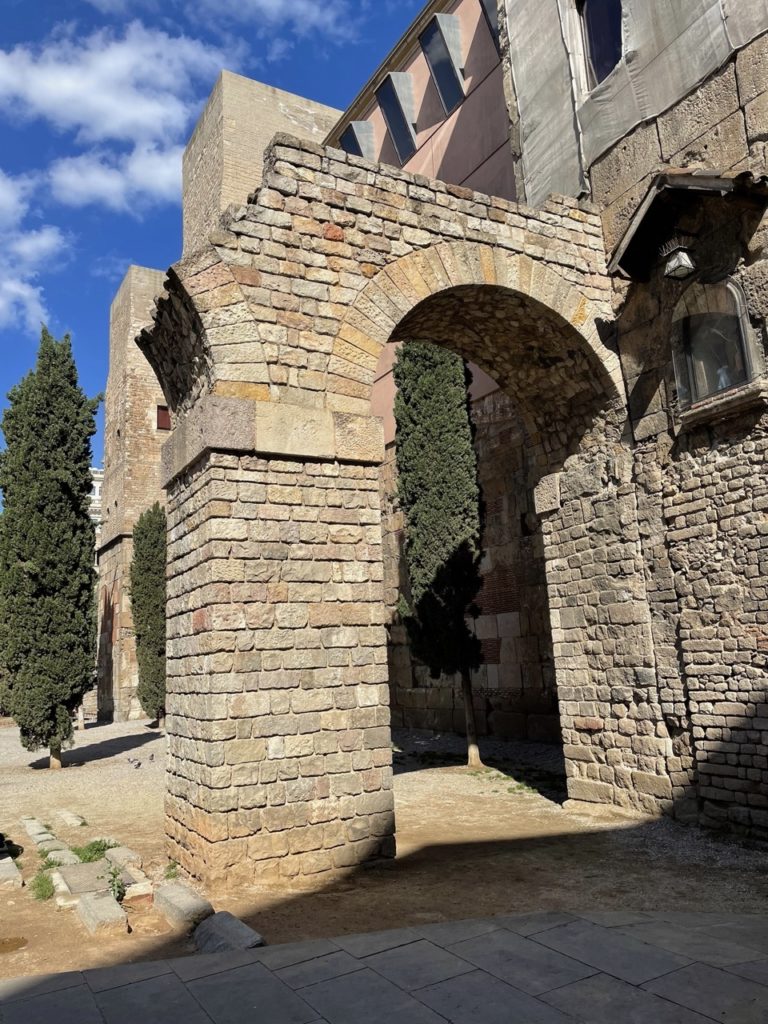
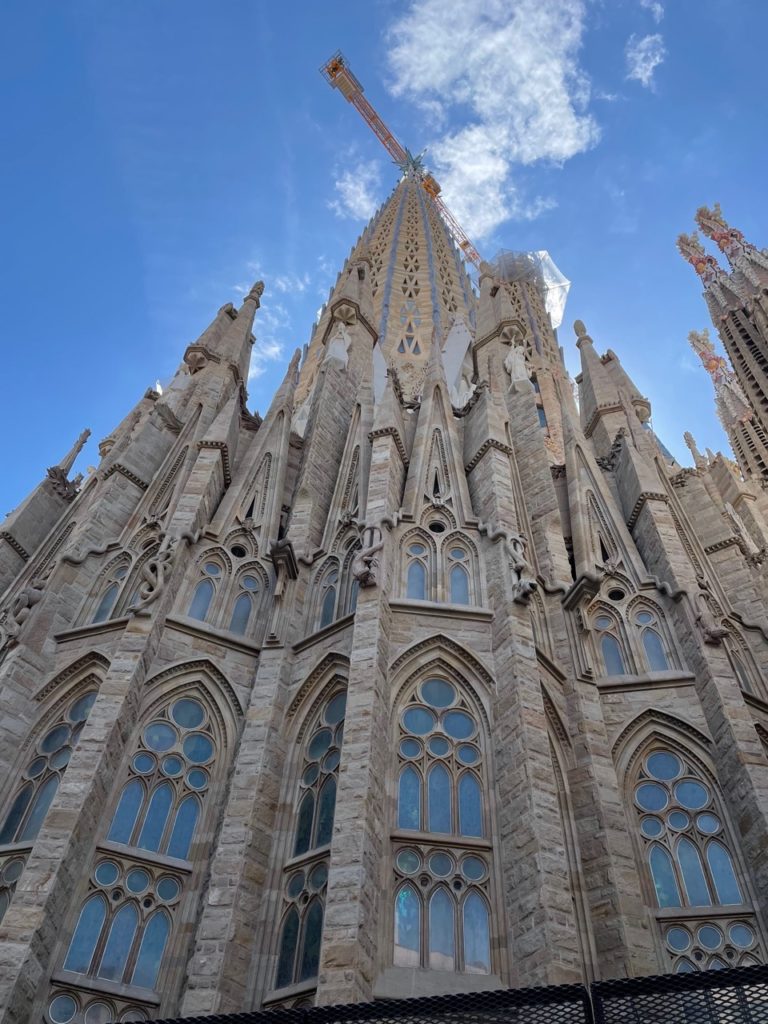

Andrew and I also went on a bit of a hunt to find the former Jewish quarter. We’d heard it was the site of one of Europe’s oldest synagogues, first constructed in the 3rd or 4th century and now a small museum. Unfortunately, we didn’t look closely enough at Google Maps so we failed to see it was temporarily closed. We did, however, manage to find its exterior, though it was a bit challenging as the only signage is a tiny mezuzah.

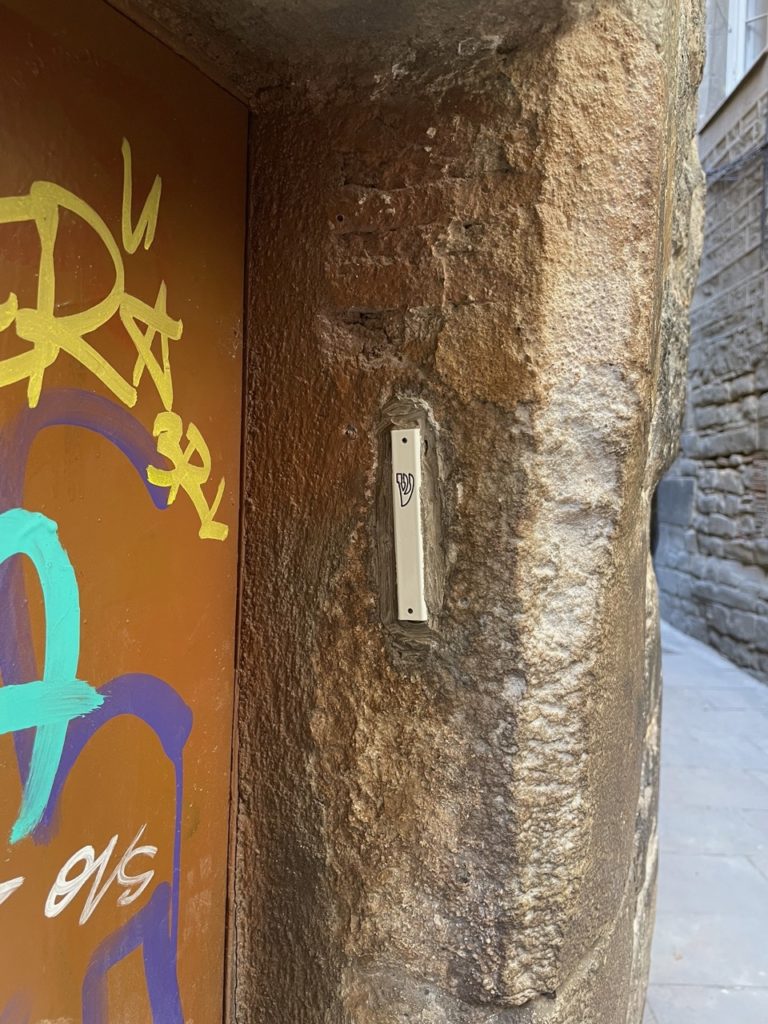
While our experience of Judaism in Barcelona may have been anti-climatic, the activity that followed was anything but. We made chocolate! Or, rather, we crafted and decorated chocolate-based creations with pre-made chocolate. We took a class at the Museu de la Xocolata and even though it was taught in a mix of Spanish and Catalan, we managed to make an incredible quantity of delicious treats. Chocolate, apparently, is universal.
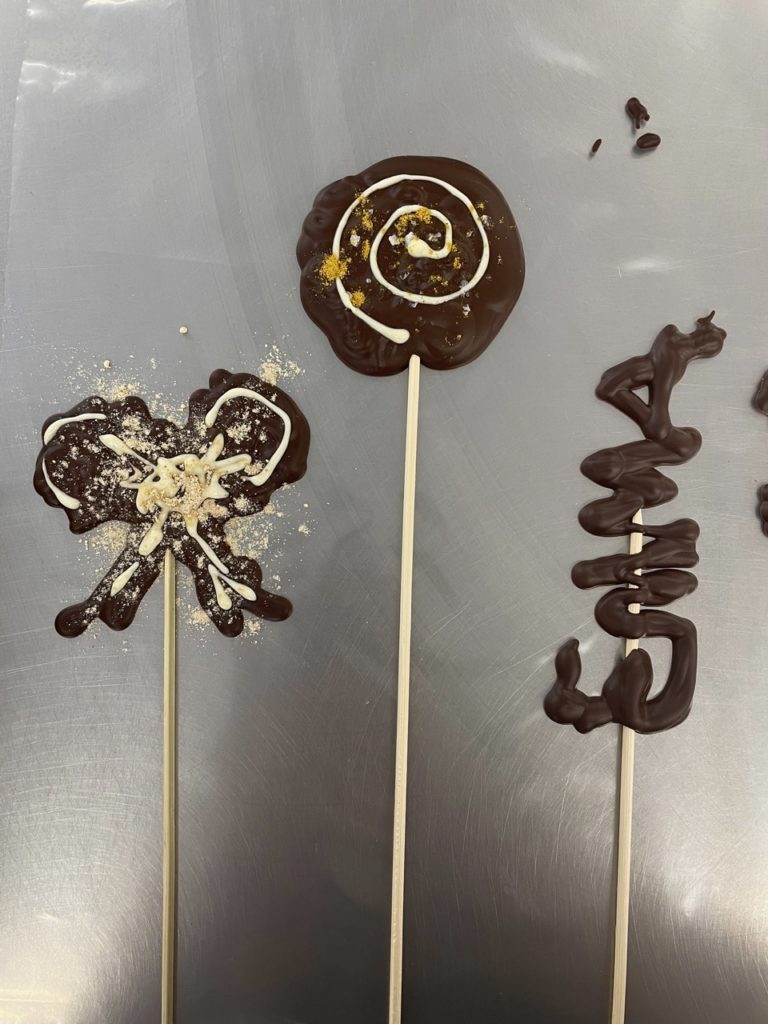
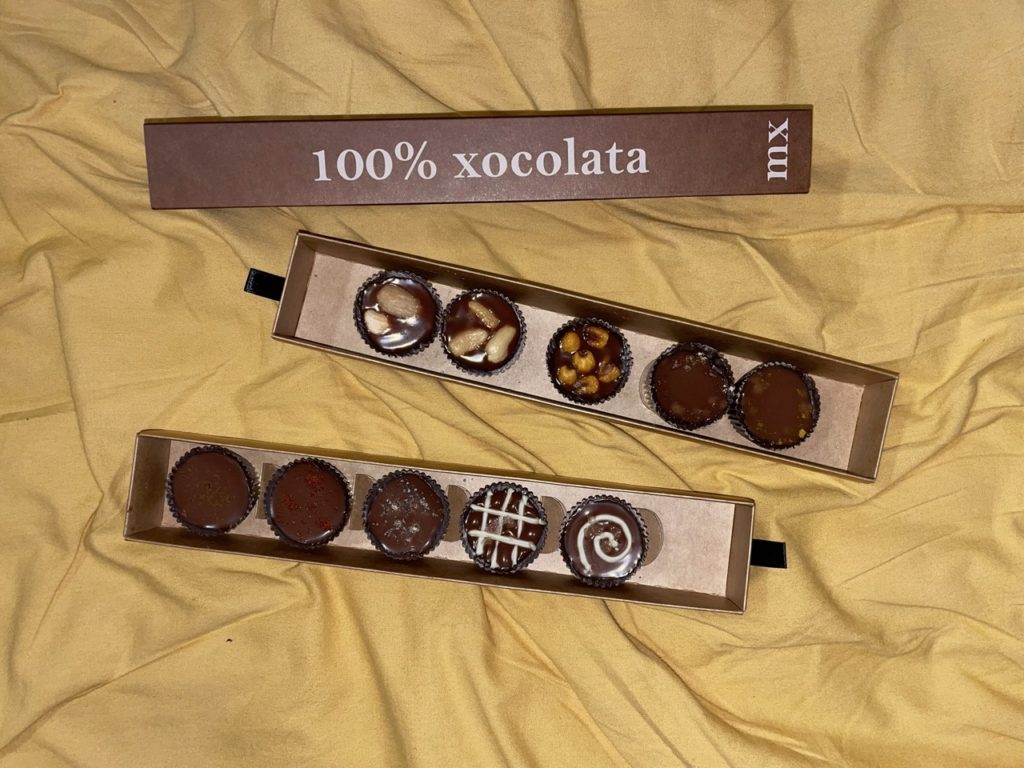
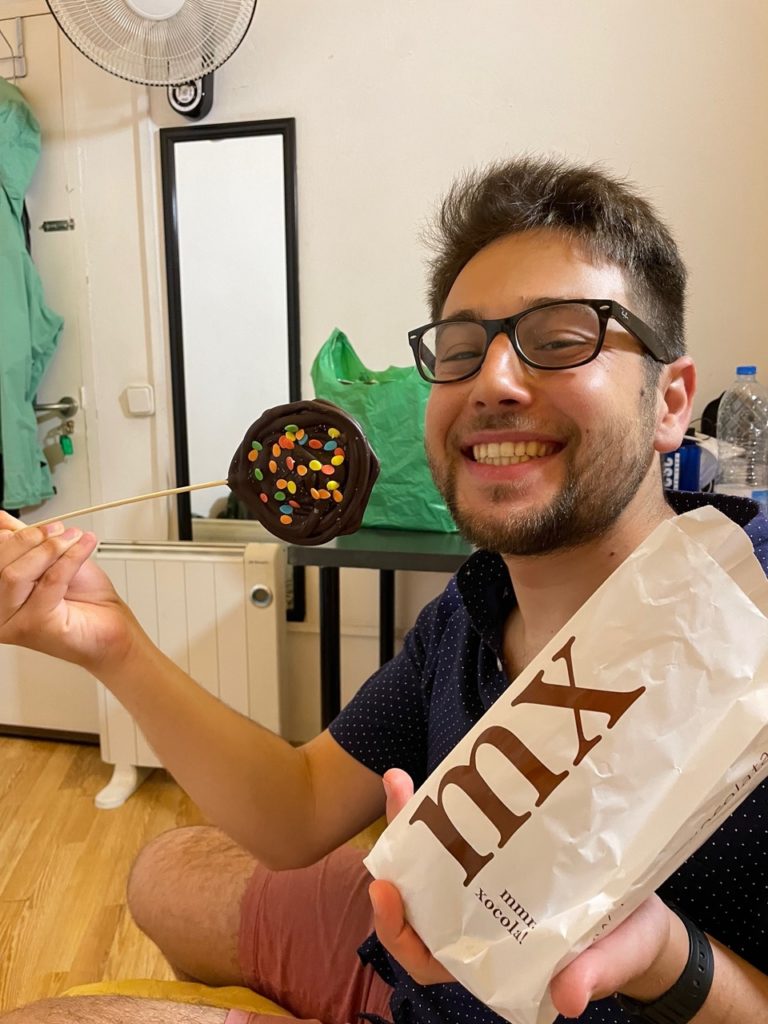
Anything that follows an afternoon spent making chocolate is bound to be a downgrade, but Andrew managed to execute a strong contender with a morning at the Mercat dels Encants. You could get lost in this enormous flea market for hours, so it’s best to fuel up as we did with a stop at the churro cart outside. I found plenty of fun trinkets I didn’t have space for in my backpack, but I particularly loved this proud, unidentifiable bird (is it a peacock? A goose?). Unfortunately, with our limited storage and even more limited back strength, unless it’s a necessity it stays put. So I waved goodbye and we headed off on our next adventure.

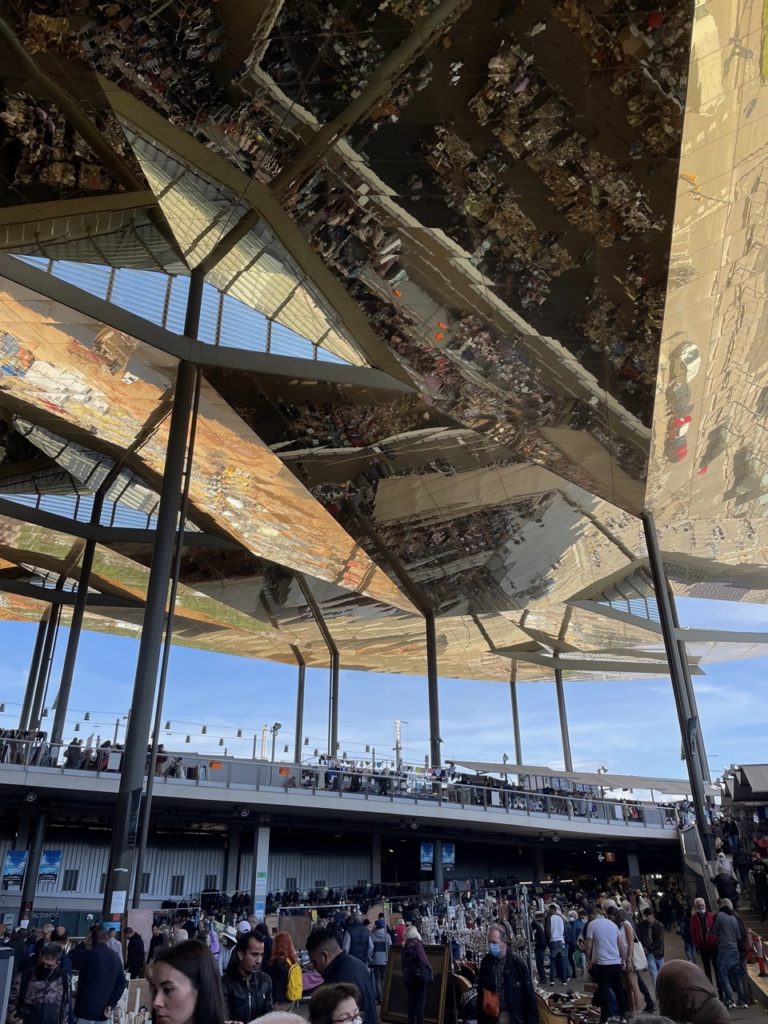
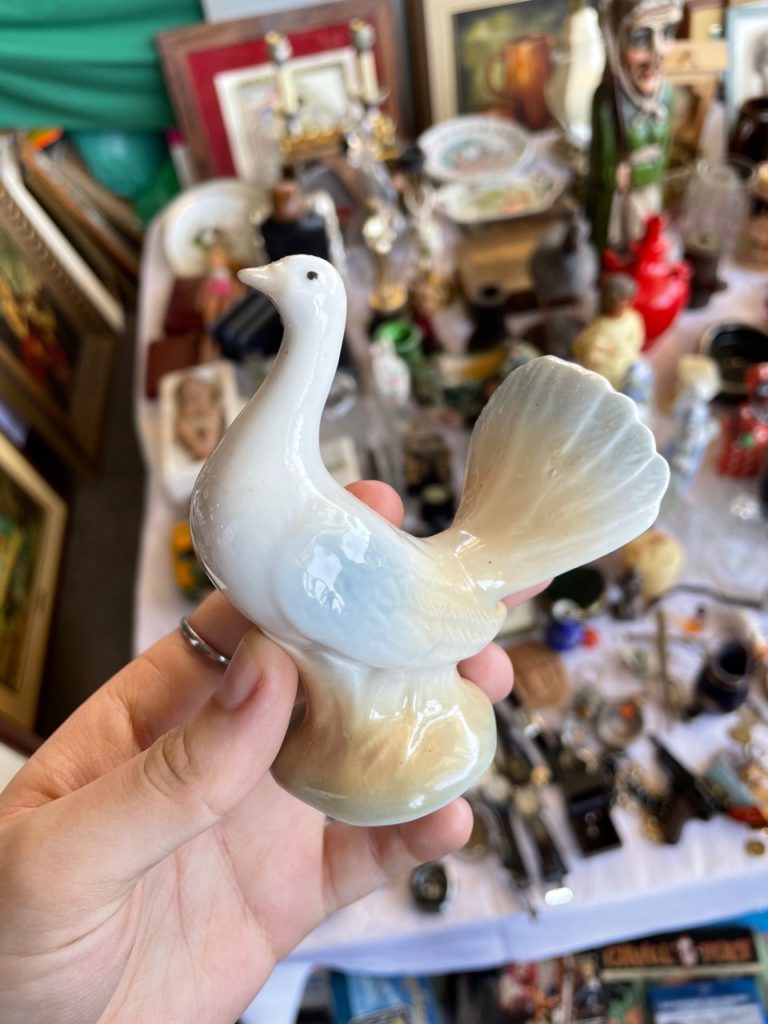
And now we arrive at our grand finale for our time in Barcelona, the incredibly famous Park Güell. Designed by the patron saint of Barcelona, Antoni Gaudí, and opened in 1926, this sprawling park is known for its concrete and tile creations that dot the landscape. It’s a huge tourist draw and it’s the primary thing I’ve always associated with the city.
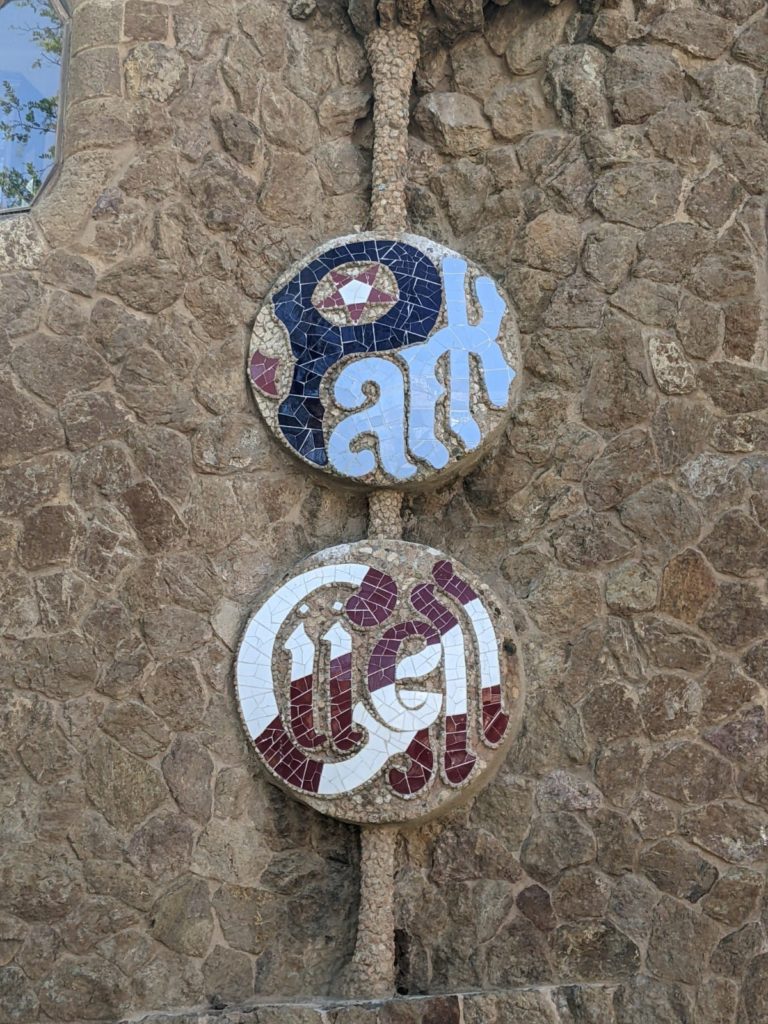
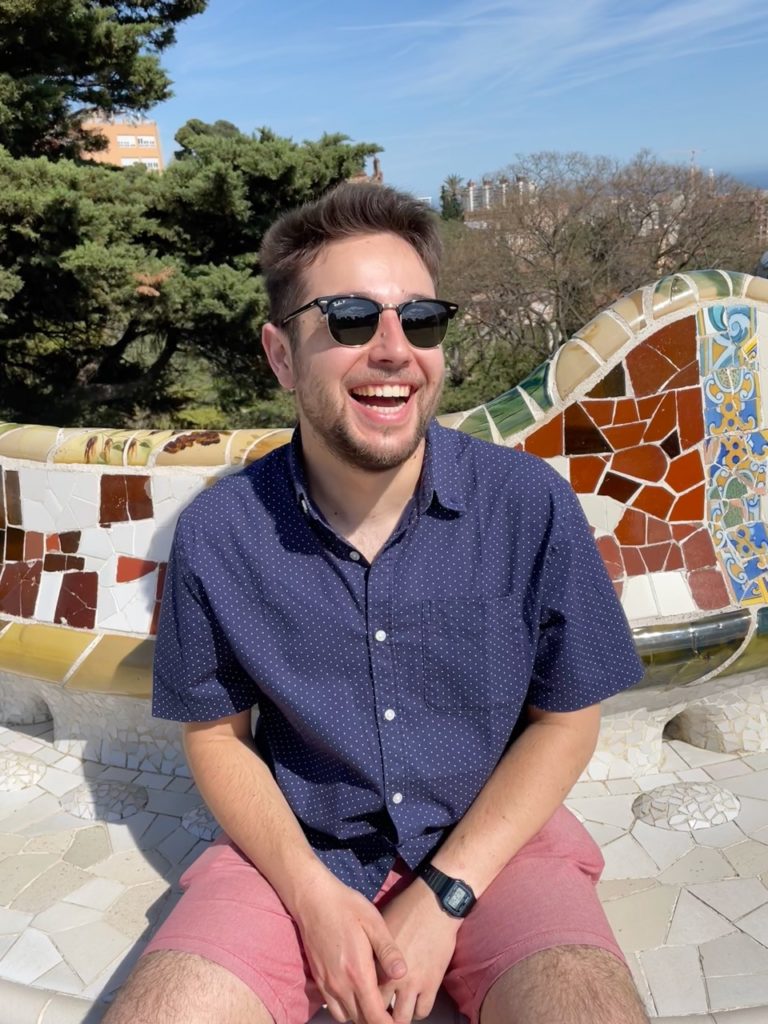
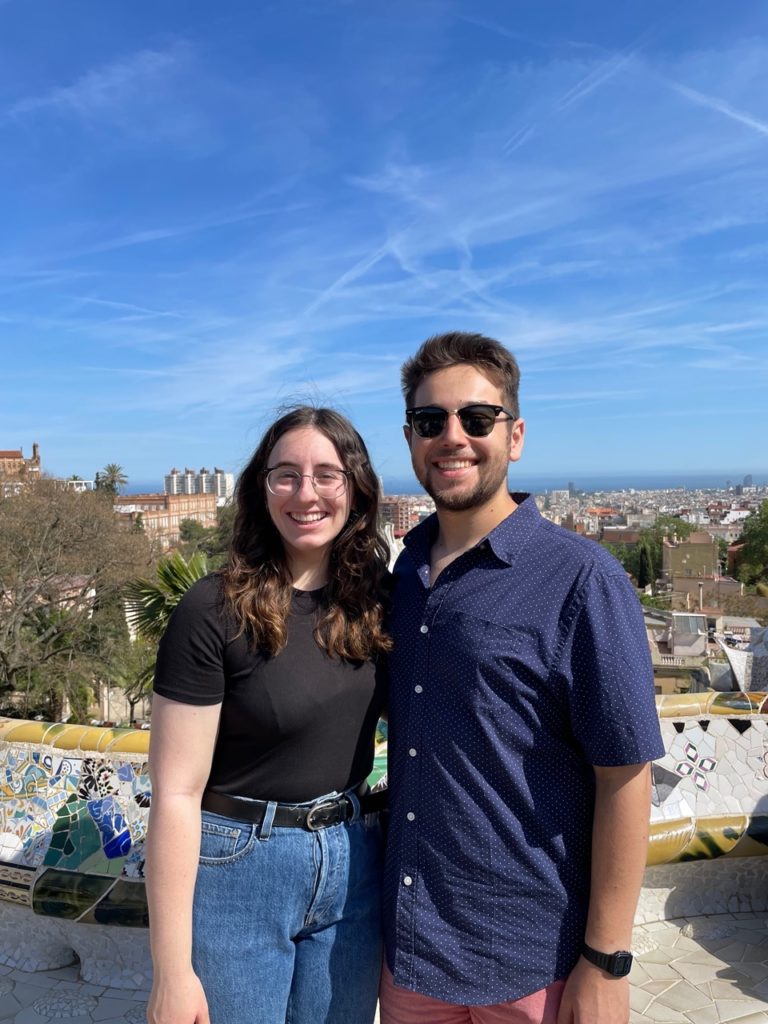
My review? Eh. Glad I went, wouldn’t go again.
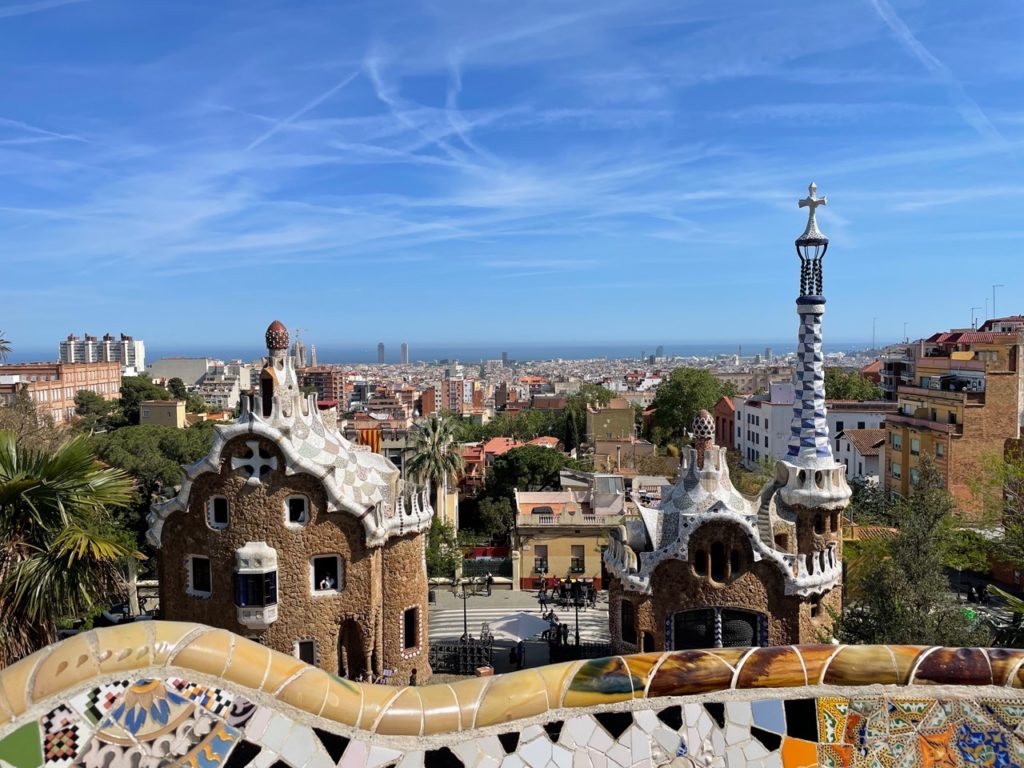
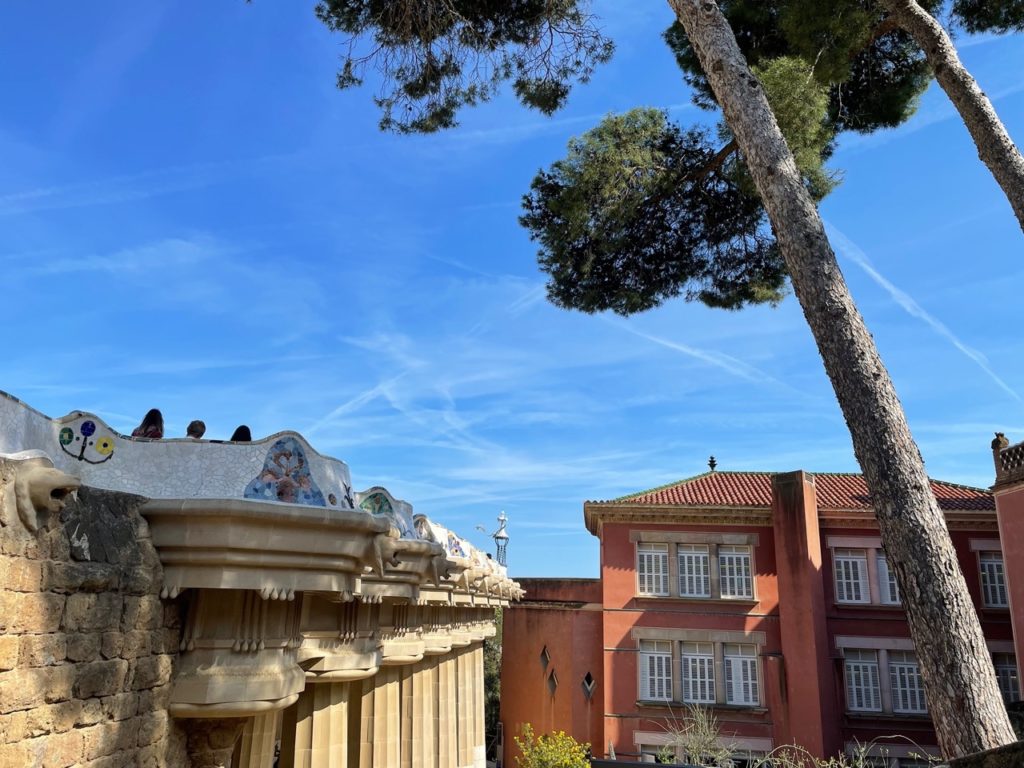
Don’t get me wrong, it’s a nicely laid out, pretty park with several beautifully designed attractions, but most of Gaudi’s work is clustered in a small area—any sense of whimsy and fun that the constructions generate doesn’t permeate the rest of the park. Frankly, I was a bit underwhelmed.

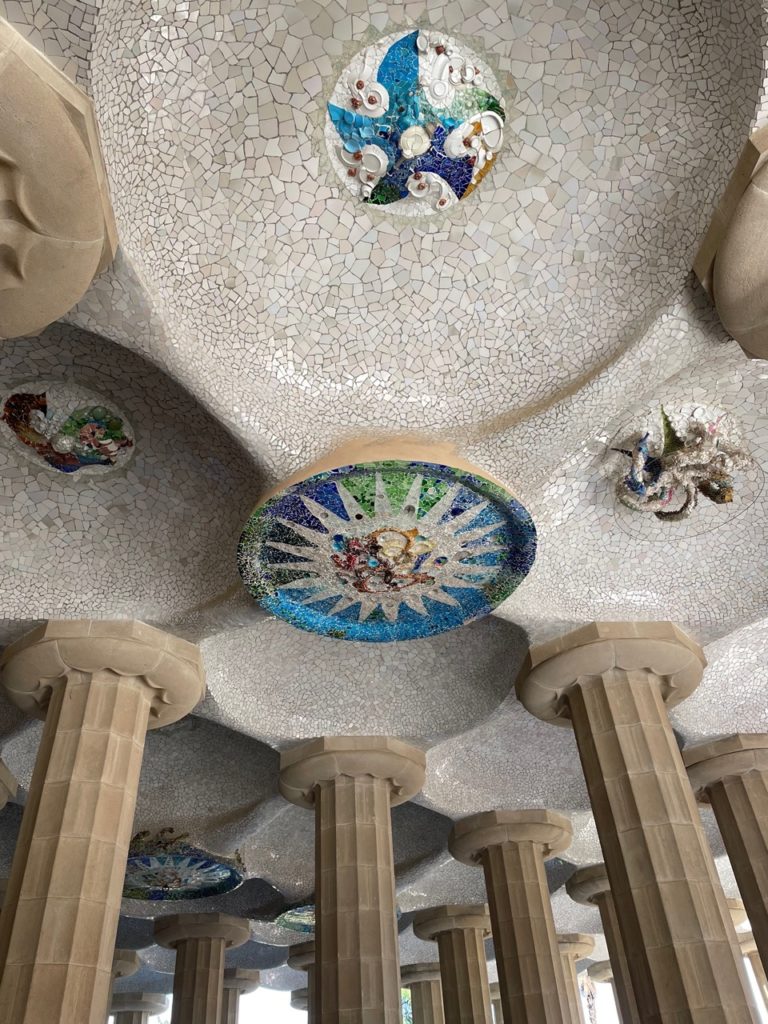

But don’t think my lack of enthusiasm means we ended our journey through Spain on a low note. Overall, I was pleasantly surprised by Barcelona and, before that, loved our time in the Basque Country. It’s truly hard to wrap my brain around the fact that two whole months have gone by, but I’m trying to remind myself that that only means there’s a whole month left! And now, finally, at last (not that I’ve been waiting for it or anything), we’re heading north into my région de langue.
Tune in next time to see how well a decade of French lessons pays off!
In love and adventure,
E
Great travel recap of the Basque Region and Barcelona….sounds like we did not miss much
when we passed on actually going into Park Guell but in retrospect a missed opportunity.
Stay safe, Fred/Dad